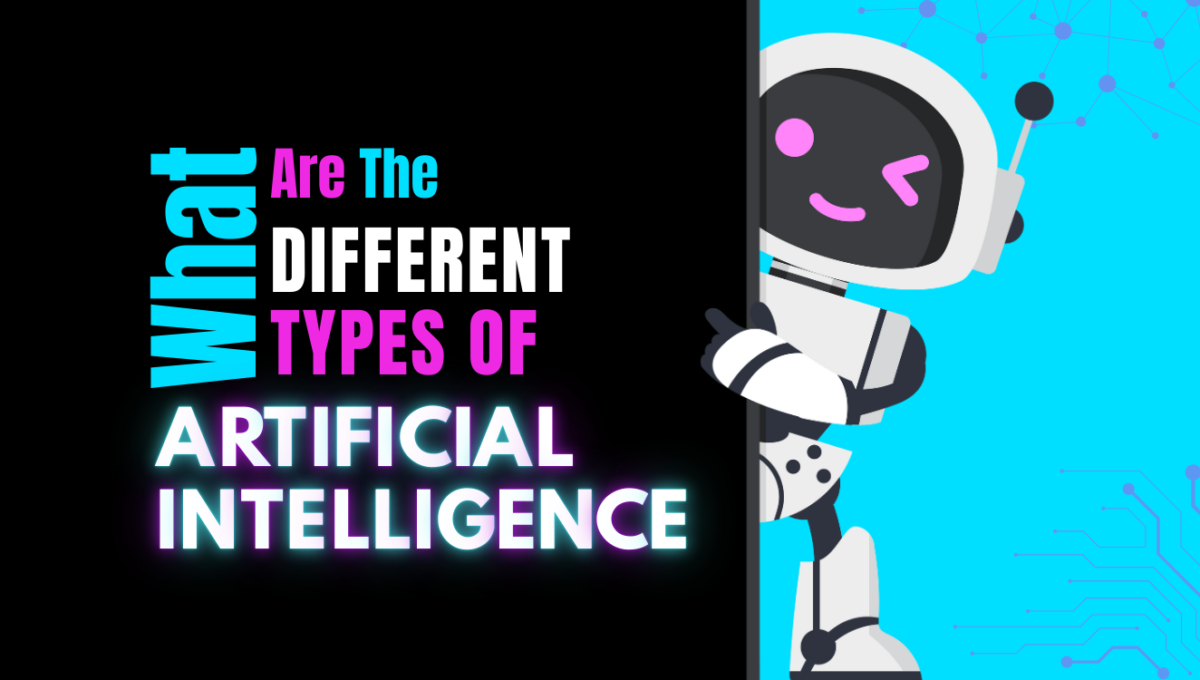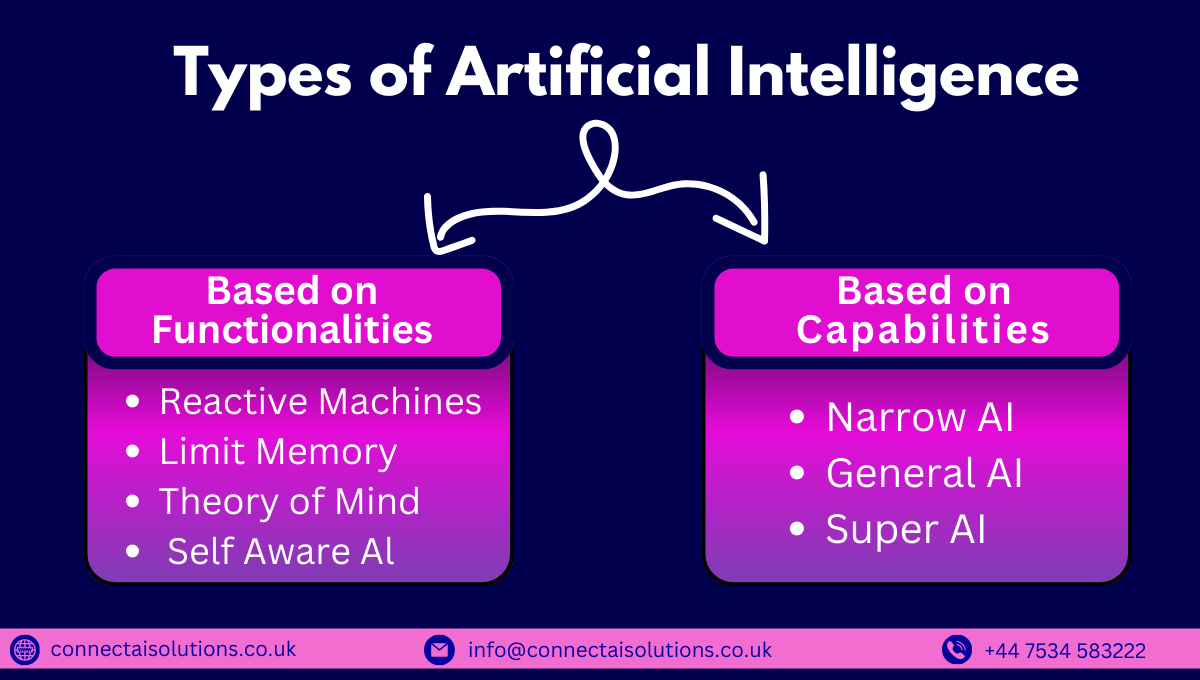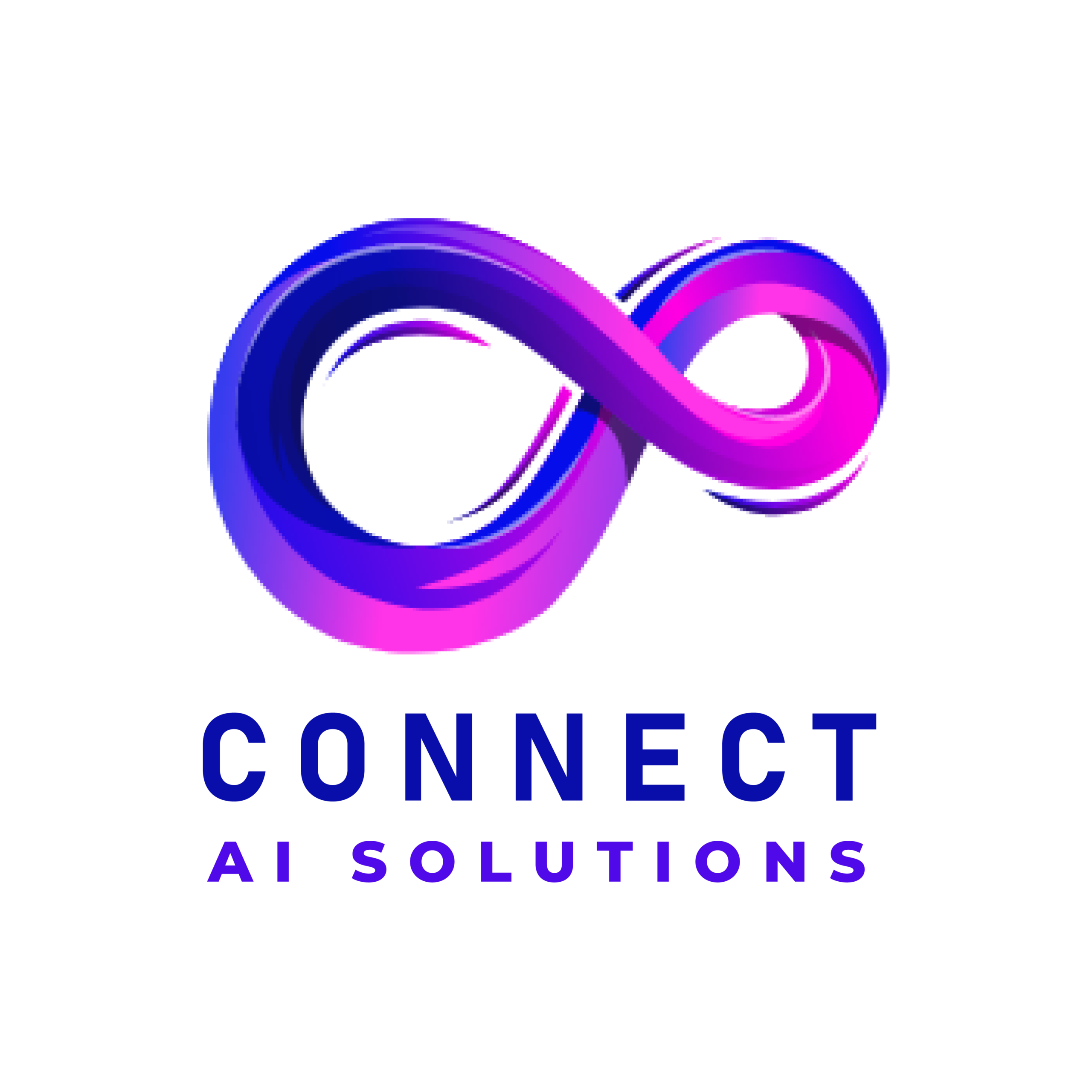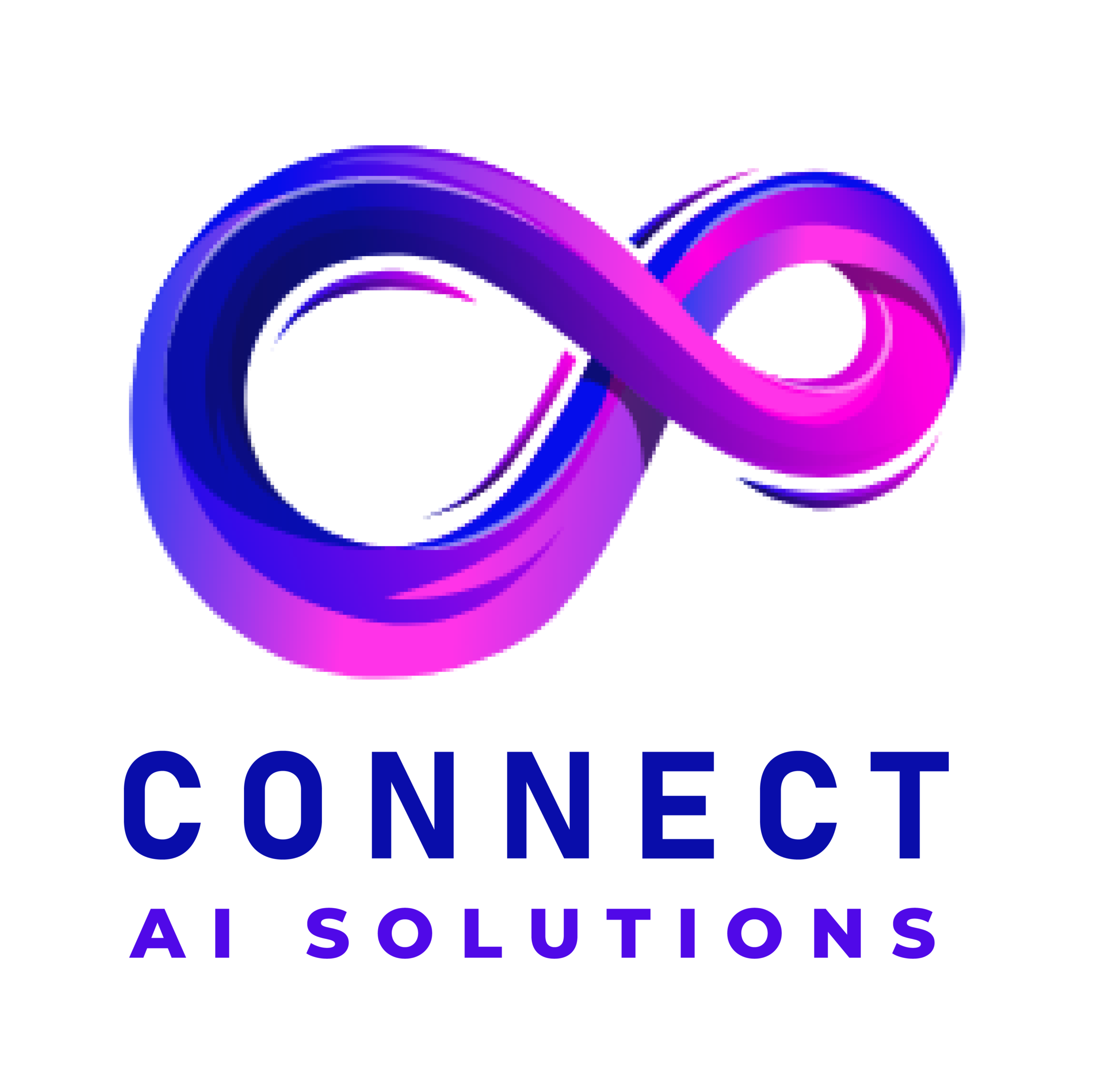What are the different types of Artificial Intelligence

This article explains to you the types of Artificial Intelligence. Artificial intelligence (AI) can be categorized into three main types: narrow AI, general AI, and superintelligent AI. Narrow AI focuses on specific tasks, like virtual assistants. General AI aims to perform any intellectual task a human can, though it’s still in development. Superintelligent AI, a theoretical concept, would surpass human intelligence. These types illustrate the diverse capabilities of AI.
Types of Artificial Intelligence:
Artificial Intelligence (AI) is changing how we live, work, and interact with technology. Machines can think, learn, and make decisions like humans. AI is divided into different types based on how advanced it is and how it functions. Let’s explore the main types of Artificial Intelligence in simple terms.
1. Reactive Machines
Reactive AI is the simplest type of artificial intelligence. These machines do not learn from past experiences or store any data. They only react to specific situations based on pre-programmed rules.
Examples:
- Chess-playing computers like IBM’s Deep Blue, which defeated a world champion by analyzing possible moves.
- Spam filters that block unwanted emails based on preset conditions.
2. Limited Memory AI
This type of AI can learn from past data and make better decisions over time. However, it can only store information for a short period and does not improve continuously like humans.
Examples:
- Self-driving cars that learn from road conditions and adapt their driving.
- Chatbots that remember past conversations for a short time to provide relevant responses.
3. Theory of Mind AI
This is a more advanced type of AI that can understand emotions, beliefs, and human interactions. It is still in the research phase and has not been fully developed yet.
Potential Applications:
- AI-powered robots that can interact with humans like a personal assistant.
- Virtual tutors that understand students’ emotions and learning styles to provide personalized teaching.
4. Self-Aware AI
This is the most advanced level of AI, where machines will have human-like intelligence, self-awareness, and emotions. Currently, this type of AI does not exist, but scientists are working towards developing it in the future.
Future Possibilities:
- AI that can think independently and make decisions without human intervention.
- AI-powered humanoid robots with feelings and consciousness.

Other Classifications or Types of Artificial Intelligence:
Apart from the above four types of Artificial Intelligence, AI is also classified into two categories based on its capabilities:
1. Narrow AI (Weak AI)
- Designed to perform a specific task.
- Cannot think beyond its programming.
- Examples: Siri, Alexa, Google Assistant, and recommendation systems on Netflix or YouTube.
2. General AI (Strong AI)
- Can perform any intellectual task like a human.
- Understands, learns, and applies knowledge across different domains.
- Still in the research phase.
3. Super AI
- More intelligent than humans in all aspects.
- Has self-awareness, creativity, and decision-making abilities.
- Currently does not exist but may develop in the distant future.
FAQs: Types Of Artificial Intelligence:
What are the 4 types of artificial intelligence?
There are main four types of Artificial intelligence, but they aren’t all the same. Some are more advanced than others, and some don’t even exist yet. The four main types of AI are: reactive, limited memory, theory of mind, and self-aware.
Is Siri an AI?
Siri Inc. is a spin-off of a project developed by the SRI International Artificial Intelligence Center. Its speech recognition is powered by Nuance Communications, and it relies on advanced machine learning to operate.
Is Google an example of AI?
Google Search, predictive analytics, and virtual assistants are examples of narrow AI. Artificial General Intelligence (AGI), on the other hand, refers to machines that can “sense, think, and act” like a human.
What is modern AI?
Modern AI refers to advanced artificial intelligence systems that use machine learning, deep learning, and neural networks to perform complex tasks. These systems can analyze data, recognize patterns, make decisions, and improve over time, enabling applications like virtual assistants, self-driving cars, and predictive analytics.
What does GPT stand for?
GPT stands for Generative Pre-trained Transformer and is a type of artificial intelligence (AI). While AI is often associated with sci-fi movies and robots, in reality, it is widely used in everyday applications like chatbots, virtual assistants, and content generation.
Conclusion
Artificial Intelligence is evolving rapidly, with new advancements happening every day. While we currently use Narrow AI daily, researchers are working towards achieving more advanced AI types like General AI and Super AI. Understanding the different types of AI helps us prepare for a future where machines and humans work together more efficiently.
Must Read This Article: Top 10 AI Testing Tools in 2025


